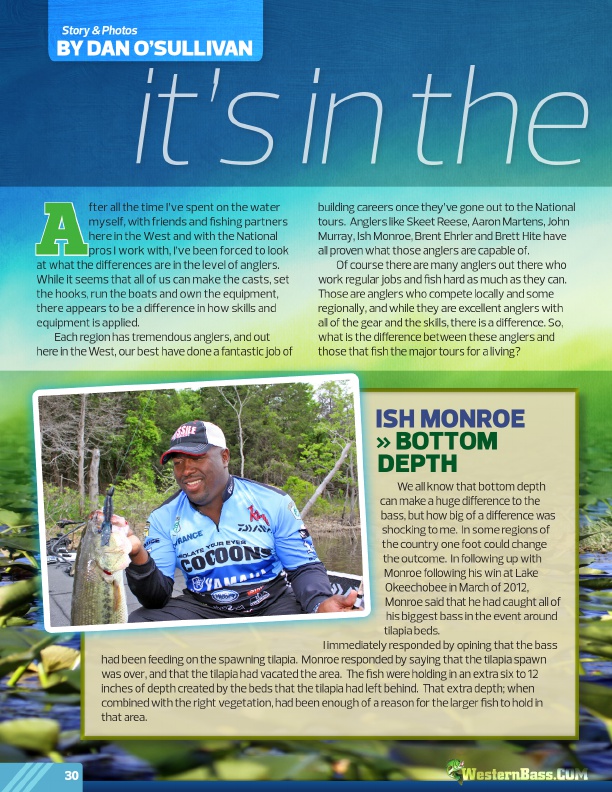
it’s in the
by dan o’sullIVan
Story & Photos
A
fter all the time i’ve spent on the water myself, with friends and fishing partners here in the West and with the national pros i work with, i’ve been forced to look at what the differences are in the level of anglers. While it seems that all of us can make the casts, set the hooks, run the boats and own the equipment, there appears to be a difference in how skills and equipment is applied. each region has tremendous anglers, and out here in the West, our best have done a fantastic job of
building careers once they’ve gone out to the national tours. anglers like Skeet reese, aaron Martens, John Murray, ish Monroe, Brent ehrler and Brett Hite have all proven what those anglers are capable of. of course there are many anglers out there who work regular jobs and fish hard as much as they can. Those are anglers who compete locally and some regionally, and while they are excellent anglers with all of the gear and the skills, there is a difference. So, what is the difference between these anglers and those that fish the major tours for a living?
We all know that bottom depth can make a huge difference to the bass, but how big of a difference was shocking to me. in some regions of the country one foot could change the outcome. in following up with Monroe following his win at lake okeechobee in March of 2012, Monroe said that he had caught all of his biggest bass in the event around tilapia beds. i immediately responded by opining that the bass had been feeding on the spawning tilapia. Monroe responded by saying that the tilapia spawn was over, and that the tilapia had vacated the area. The fish were holding in an extra six to 12 inches of depth created by the beds that the tilapia had left behind. That extra depth; when combined with the right vegetation, had been enough of a reason for the larger fish to hold in that area.
Ish monroe » bottom depth
30